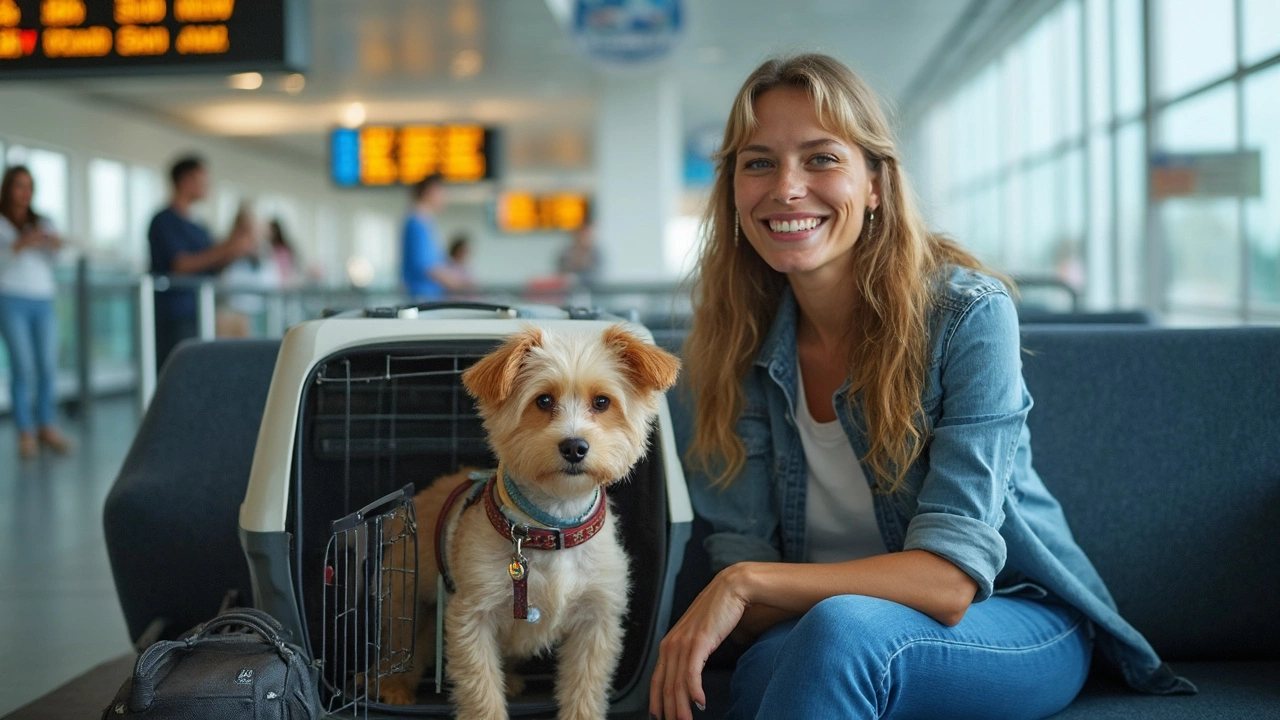Airline Rules for Dogs: What You Need to Know Before You Fly
Travelling with a dog can feel like a puzzle, but once you know the basics you’ll be much less stressed. Below is a quick rundown of the most common airline rules and a few handy tips to keep your pup safe and comfortable.
Cabin vs. Cargo: Where Your Dog Can Go
Most UK and US airlines let dogs under 15‑20 lb travel in the cabin if they’re in an airline‑approved carrier that fits under the seat. Bigger dogs usually go in the cargo hold, which is temperature‑controlled and pressurised. Always check the airline’s size limits and weight restrictions before you book.
If you’re flying with a large dog, ask the airline about “pet‑friendly” flights—these are often early‑morning or late‑evening departures when the hold is less busy.
Paperwork, Health Checks, and Insurance
Every airline wants a recent health certificate (usually within 10 days of travel) and proof of vaccinations. Some carriers also require a pet passport if you’re travelling within Europe.
Do you need insurance? Not always, but a pet travel insurance policy can cover unexpected vet fees, flight cancellations, or if your dog gets lost. It’s a small cost for peace of mind.
Make sure the carrier is sturdy, has ventilation on all sides, and is labeled with “Live Animal”. A soft‑sided carrier can be squished, so a hard‑shell one is safer for cargo.
Before the flight, give your dog a light walk and let them potty. Avoid feeding a big meal right before travel; a small snack a few hours earlier keeps nausea at bay.
At the airport, keep the carrier close and avoid opening it in busy areas. If you’re going through security, you’ll need to take the dog out of the carrier and place it in a bin. Having a calm voice and treats can help keep them relaxed.
When you board, place the carrier under the seat right away. If you’re travelling in cargo, ask the staff to double‑check that the carrier is labeled correctly and placed in a climate‑controlled section.
After landing, give your dog a chance to stretch and drink water. If they seem anxious, a familiar blanket or toy can make a big difference.
Quick checklist:
- Confirm cabin or cargo eligibility.
- Book a pet spot early—many airlines have limited space.
- Get a health certificate and up‑to‑date vaccines.
- Pick an airline‑approved carrier.
- Consider pet travel insurance.
- Pack a travel bag with treats, water, and a blanket.
- Arrive at the airport early for paperwork.
Don’t forget the pet fee—most airlines charge between £30 and £150 each way, and the charge is usually non‑refundable. Keep the receipt in case you need to claim it later.
Season matters, too. Summer heat can make cargo holds warmer, so many airlines restrict pet travel in July and August. If you must travel then, look for airlines that promise climate‑controlled holds or consider a shorter flight with a layover.
Finally, a few calming tricks: a snug blanket, a favorite chew toy, or a pheromone spray can keep nerves down. If your dog is prone to anxiety, talk to your vet about a low‑dose calming medication before the flight.
Following these steps should make your next flight with a dog smoother than you imagined. Got a specific airline in mind? Check their website for the exact numbers—they can vary a lot. Safe travels!
- Morgan Ainsworth
- 0 Comments
What Size Dog Can Fly in the Cabin? The Real Rules for Pet Travel
Ever wondered if your dog can actually sit with you on a flight? This article lays out the facts about airline rules for dogs in the cabin, including size and weight limits, carrier requirements, and surprising exceptions among different airlines. Picking the right pet carrier can make or break your trip, so you'll get hands-on tips for cabin-friendly options. Learn how to prepare for your dog's comfort, plan for layovers, and avoid airline surprises. Get the real answers, not just what your neighbor heard at the dog park.
View More
